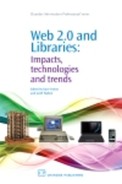Acknowledgements
Dave Parkes
The innovations in emerging technologies we have witnessed over the last few years have started to challenge almost all of my assumptions of what a library can be – not in the technology itself but the engine of community involvement it has generated. Customers can be partners, authors, co-creators of the vision of a library – a library that is always open, always on, physical and virtual, static and mobile, morphing and changing to meet future needs and expectations. A library is a mixed economy of open source, managed service and hand-built solutions – they don’t stand alone any longer, they are connected entities.
I am delighted to say that the librarians and learning technologists delivering this vision at Staffordshire University are incredible, innovative and driven individuals. I would like to acknowledge and thank them for being a delight to work with and a source of inspiration.
I also thank Geoff my companion editor for continual encouragement and harassment over deadlines – this book would not exist without his tenacity.
My children Jack and Izzie are a source of wonder and delight. I watch them learn and use technology with what appears to be an innate confidence and consummate skill, and they still have the patience to explain to me what it is they are doing.
I would like to thank my wife Carol for putting up with the conversations held over the screen of the laptop during the gestation of this book – for being an inspiration… and for everything.
Geoff Walton
My interests in Web 2.0 emerged from two very distinct areas: first, research I carried out as part of my PhD at Loughborough University under the guidance of Mark Hepworth; and second, conversations with Dave in meetings, conferences, on the train, in corridors and when fighting over the printer! Through my PhD research it became clear very early on that harnessing the social aspects of learning and then transferring them to the virtual domain provides a very rich and powerful learning experience. My work focused on the nexus of four domains: learning, e-learning, information literacy and information behaviour. Using the scholarship from these domains provided the foundation for a successful online social network learning intervention. Given the rapid changes in Web 2.0 it seemed to me that we need to devise learning structures and ways of working which transcend the shape shifting technologies that make up Web 2.0. This book goes some way to addressing that issue. Conversations with Dave have shown me that we are on the cusp of a real revolution, especially in the way information is presented, disseminated and used.
I would like to thank all of the contributors for their erudite and expert chapters. I enjoyed reading their work, which led me on many interesting journeys of discovery. I would also like to thank my colleagues for their encouragement and support while I carried out my research and teaching: Jamie Barker, Jamie Cleland, Shaun Coates, Andrea Hatton, Paul Johnson, Kathleen Morgan, Alison Pope and Deb Roberts. Special thanks to Joanne Walton at the City of Sunderland College for carrying out the study with A-level sociology students mentioned in Chapter 3. I must not forget to mention my daughters Kath and Hannah. Finally, and most important of all, I would like to thank my wife Caroline for listening, encouraging me and supporting me in my work.
We would like to thank Tim O’Reilly for giving us permission to reproduce his Web 2.0 meme map.
We would also like to thank all those at Chandos, especially Susannah Wight, who have supported this venture to its completion.
